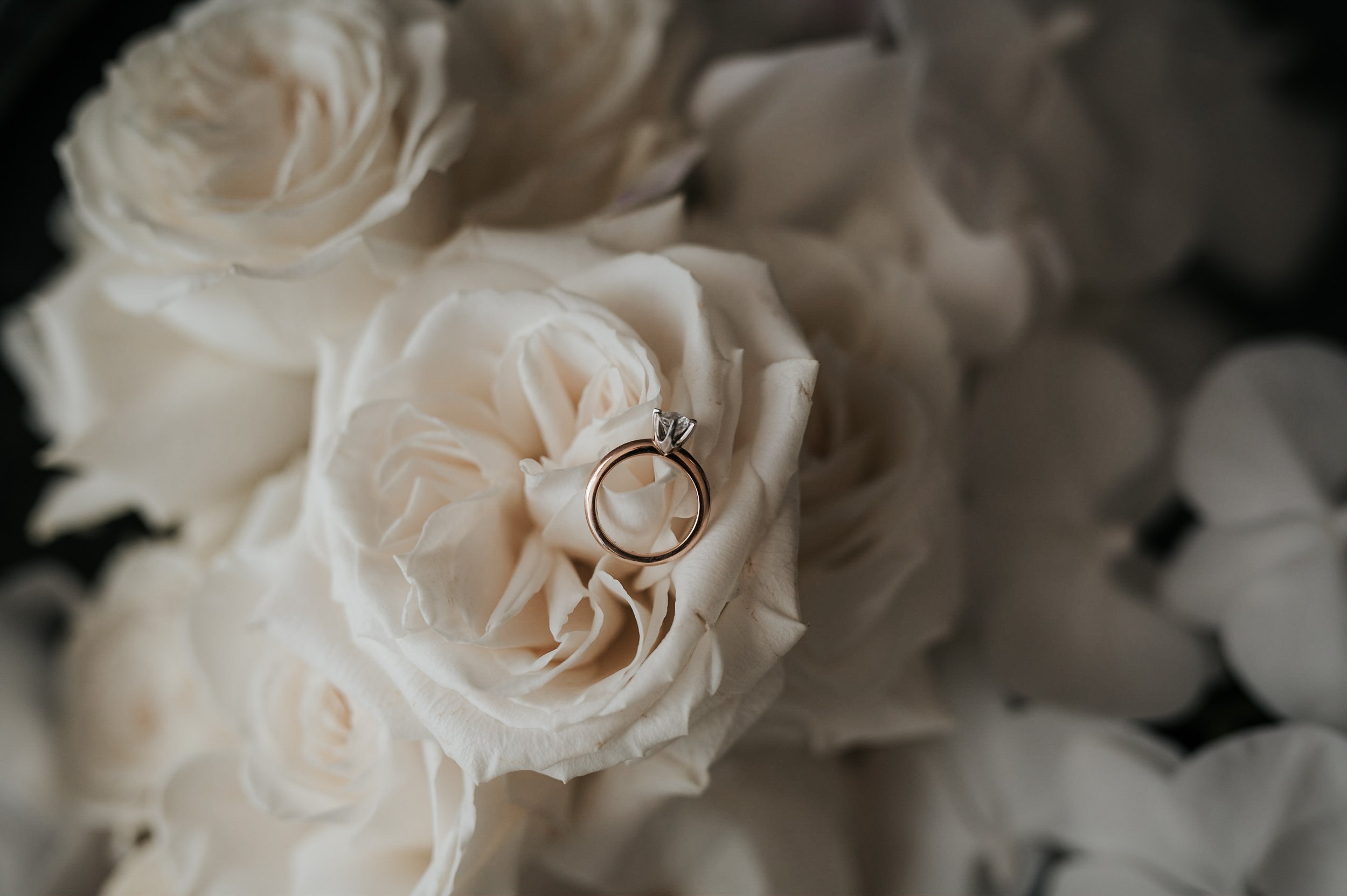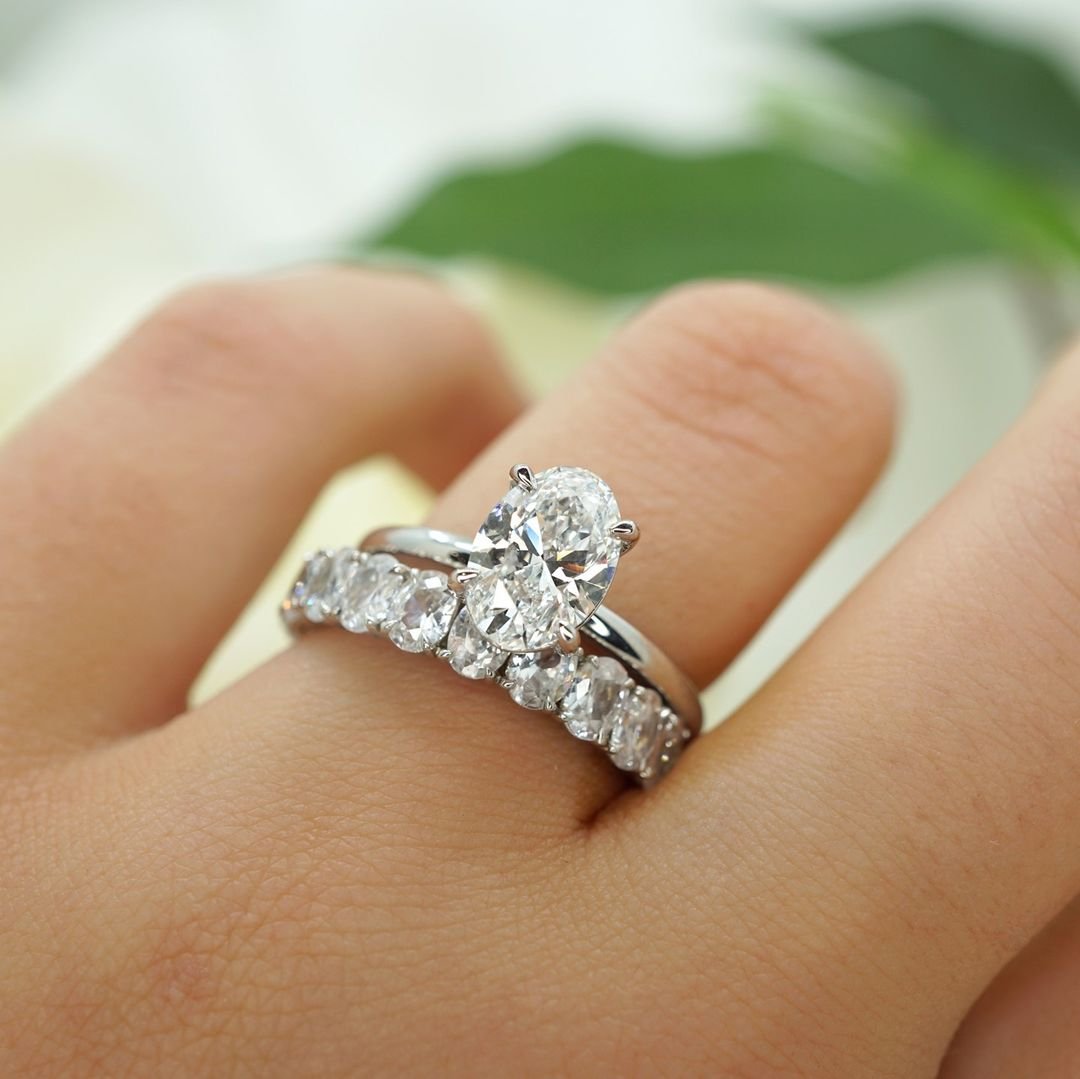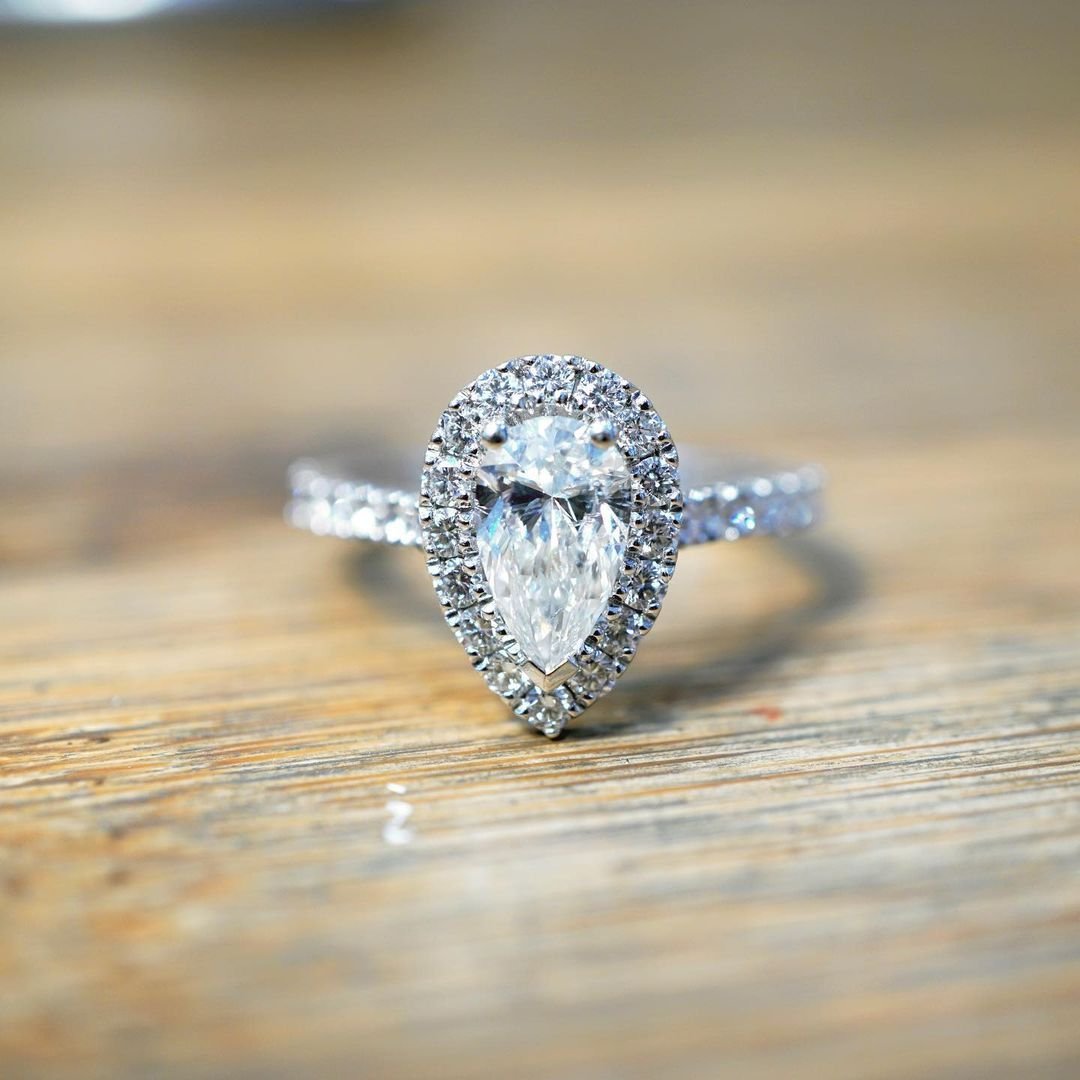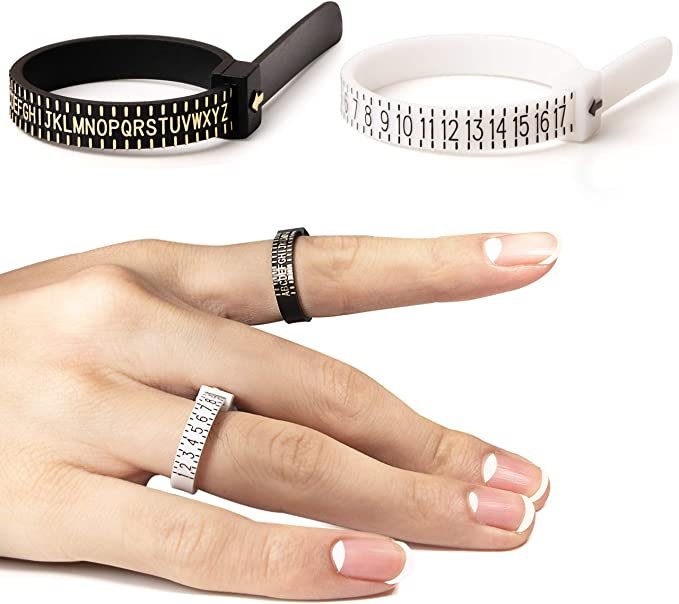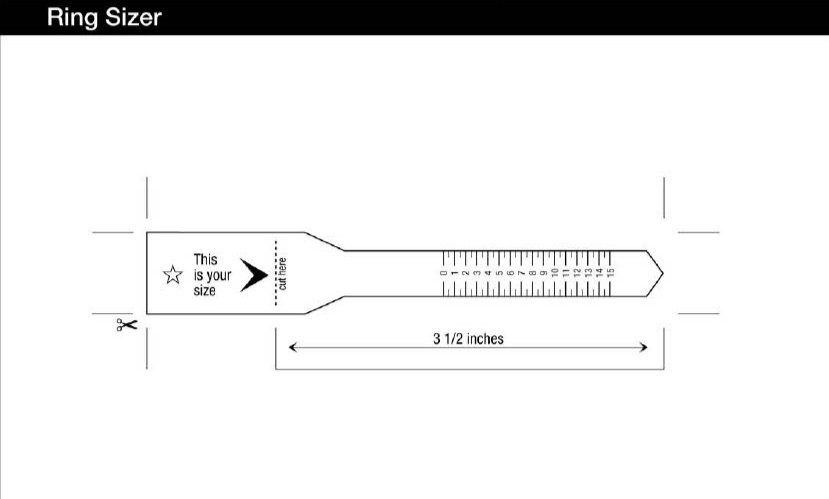Getting engaged to your bae is likely to be (at least!) one of the top 5 most exciting times of your life - followed closely by actually marrying them, of course. It is the beginning of a new chapter for you both, full of promise and potential.
And, as if the proposal itself isn't thrilling enough, picking out the perfect engagement ring to seal the deal is almost as much fun.
But what if you don't know your ring size or if you're not sure how to measure your ring size? Essentially, finding the perfect ring size for your engagement ring can be tricky. Too small and it feels uncomfortable and maybe won't fit; too large and it'll look too big on your finger or even worse, potentially slip off.
In this guide, we’ll teach you everything you need to know about finding the perfect engagement ring size, from the basics of measuring your finger to resizing a ring that’s too big.
With the expert help advice from Class A Jewellers and this guide, you’ll no longer need to worry about how to find your perfect engagement ring size. And you will feel relaxed, super excited, and confident come proposal day.
*Unbridely is sponsored by its readers. When you purchase products or services through links on our website, we may earn an affiliate commission. As an Amazon Associate I earn from qualifying purchases.*
5 Important Things to Consider When Measuring Your Ring Size
There are a few crucial factors you need to know in advance when measuring your ring size, these include;
1. Understand the difference between ring bandwidths
Ring sizes are likely to differ depending on their bandwidths (and we don’t mean their capacity to multi-task). If the engagement ring has a thick or wideband, they generally fit in tight or closer to your finger; otherwise, the fit is loose, leaving a little wiggle room. This means that engagement rings with more slender bands won’t fit as tightly as those with a wider band.
For example, a size 5 engagement ring with a thick band will feel like it hugs your finger and be more tightly fitted compared to a ring size 5 with a thin band. Therefore if you decide to choose an engagement ring with a thin band, it’s sometimes worth trying on a smaller size of engagement ring than your actual ring size.
And likewise, if you are opting for a thick-wide band, then it’s recommended you get a bigger size than your ring size since it’s usually going to be a more snug fit.
*Note: Thin or slender banded engagement rings often have a more refined or elegant look compared to thick wide band rings. However, especially depending on how much manual work you do with your hands over the course of your usual day, a thick-wide banded engagement ring may be more practical.
2. The shape of your finger
Many people don’t realise how the shape of their finger can affect how their engagement ring size and how it fits. Typically, an engagement ring worn on a long narrow finger may be likely to fall off due to the wearer having a smaller knuckle and wider finger base. Although sliding a ring on is easier on this finger shape, having a snug-fitting ring is highly important.
If, however, your finger shape is on the larger side, your knuckle will determine how your ring size fits. When picking an engagement ring, you should opt for a size a bit bigger than your base finger; else, your ring might not be able to be comfortably put on and taken off.
Also, if your ring feels slightly loose at the base of your ring finger, you can ask your jeweller to make a fitting add-on to secure the space.
3. The impact of weather and natural surroundings
Just the same as your metal garden gate won’t shut properly in the heat of Summer, the temperature of your environment when you’re measuring for or trying on engagement rings can greatly impact the size that fits you best.
When you are in a cold environment, your body tries to keep you warm by reducing the flow of blood to your extremities, especially to your fingers and toes. This causes your fingers and toes to shrink, so if you are wearing a ring on your finger, it will become loose.
The opposite happens when you’re in a warm environment. Your body tries to cool itself by increasing your blood flow so the excess heat in your body can be released through your skin. This process causes your fingers (and toes) to expand, so if you are wearing a ring, it will suddenly become tighter.
These constant and natural temperature changes in our environment can alter what your perfect engagement ring size is. To best avert this problem, it's ideal you try on your engagement ring or measure your finger when you and your environment is at room temperature (ambient between 20-26 degrees Celcius)
4. Time of measuring
Not all times of the day are optimal for measuring your engagement ring size. Often, most people’s fingers tend to expand during the evenings and compress during the day, especially in the morning. It’s for this reason that the best practice is to measure your finger in the evening to get your perfect ring size.
5. Finger expansion and contraction due to other factors
It’s also worth keeping in mind that physical activity, while it’s great for the heart, can also cause your fingers to expand. Pregnancy, arthritis and even illnesses including excessive body fluid can also cause your fingers to grow bigger.
When this happens, your ring size will also be affected.
Low temperatures and weight loss can cause your fingers to contract too.
How to Measure Ring Size
There are a 6 different ways of measuring your ring size. You can choose to do it yourself, use a ring sizer, or get yourself professionally measured. Here’s everything you need to know when measuring your finger for your engagement ring size.
Option 1 (recommended): Get professionally sized
The problem with measuring your ring size yourself is — often, there can be inaccuracies. And this is where the expertise of a professional jeweller comes to play.
A professional jeweller uses a sizing ring to get your ring measurement. In most cases, they allow you to try on a set of rings in-house till you find your size. Also, it's important to note these sizing rings may vary from one jeweller, or manufacturer, to another.
Some sizing rings may be thicker than the average band size, while others are slightly lightweight.
Therefore, ensure to also purchase from the same professional jeweller that you get measured by. This makes it easier to get the perfect ring size since they already have your band measurement and they can also advise on any resizing restrictions they (or the band design) may have before you purchase.
Option 2: Order a FINGER GAUGE ring sizer online
Making a quick search on Google or popular shopping websites such as eBay and Amazon offers various ring sizers to effectively measure your ring size.
Although they can cost up to $25 USD, they are one of the easiest and most accurate ways to find your exact ring size.
Option 3: Measure ring size using a Mandrel finger gauge
A ring sizing stick, or Mandrel finger gauge, is a measuring instrument made from aluminium, steel, tapered wood or plastic. The sizing stick is usually marked in increments equivalent to a ring’s inside diameter.
To measure the ring size using a sizing stick, first, get a ring you own and slide the ring onto the gauge. Check for where the ring fits perfectly. Your ring size is the number corresponding with the spot where your ring slides down.
The accuracy of this method is dependent on the fit of the ring you use to measure on the Mandrel finger gauge. As in, if the width of the band of the ring you use to measure is similar to the engagement ring you want to buy and it’s comfortable on your ring finger today at room temperature (you haven’t lost or gained a lot of weight recently), then it will be as close as possible to your actual ring size.
If, however, the width of the ring band that you are using to measure your ring size with on the Mandrel finger gauge is thick, and the engagement ring you want to purchase has a thin band, this may change your result and impact how comfortable your engagement ring fits on your finger.
Option 4: Use a printable ring sizer
Printable ring sizers are readily available online. But, you will need to download and print it out before starting to measure. Also, it’s recommended you measure your finger first thing in the morning (when it’s coolest) to avoid errors that occur when your fingers swell later in the day.
After you’ve downloaded and printed the ring sizer (making sure that the section indicated is exactly 3.5 inches) cut out the. Cut a small slit at the dotted line, as indicated.
Gently wrap the ring sizer around your finger, ensuring the numbers are facing out so you can read them. Push the pointed end through the slot until the paper feels comfortable against the base of your ring finger allowing a little extra space for the paper to slide over your knuckle. Your ring size is the number aligned with the slit.
Option 5: Use another ring and a ring sizer chart
This method involves using a ring you already own and measuring it against a ruler. When you’ve got your measurement from the inner diameter of the ring, compare it with the ring sizer chart.
Print the ring sizer chart and set your ring on the images available on the sizer. Continue to compare one after the other until you find a ring size and corresponding diameter.
*Note: This method comes with a downside. If you have lost or gained weight over time, your old ring might not reflect your current size.
Option 6: Use a ring sizing guide & string/paper
A sizing guide shows you which measurements to take representing the ring's inner diameter and inside circumference in mm and inches.
Fortunately, there’s a ring sizer chart you can use as a guide to match your measurements to the appropriate Australian, UK, US and Canada ring sizes quickly and easily. Class A Jewellers has this sizing to help you: the Australian and the US measurement chart.
To get your ring size use a piece of string or a strip of paper. Wrap the string or paper strip around the base of your ring finger. Be careful not to wrap too tightly, as this may distort the result.
Take a pen and mark the area where the string or paper overlaps. Unwrap the string, get a ruler and measure the length against the ruler. Using the circumferences on your size guide, compare your measurements to determine your ring size from the country you’re purchasing it from.
How to Resize A Ring
You might need to resize your engagement ring to expand the size/make it larger because it’s too small or perhaps reduce the size because it’s too big for your finger.
According to Class A Jewellers, “it is always best to choose an engagement ring half a size larger than what you're thinking - it's much easier to downsize a ring than it is to size up”.
To expand the size of your ring, it will need to be checked by your jeweller to see if the required size exceeds the strength of the ring. If it does, your jeweller will add additional metal to stretch it to size so the ring doesn’t lose its strength and durability.
On the other hand, reducing an engagement ring's size will mean your jeweller will need to cut out excess metal and solder it back to create the desired size.
We’d love to know how you’re going about making sure that your engagement ring fits and feel comfortable.
Let us know in the comments!
